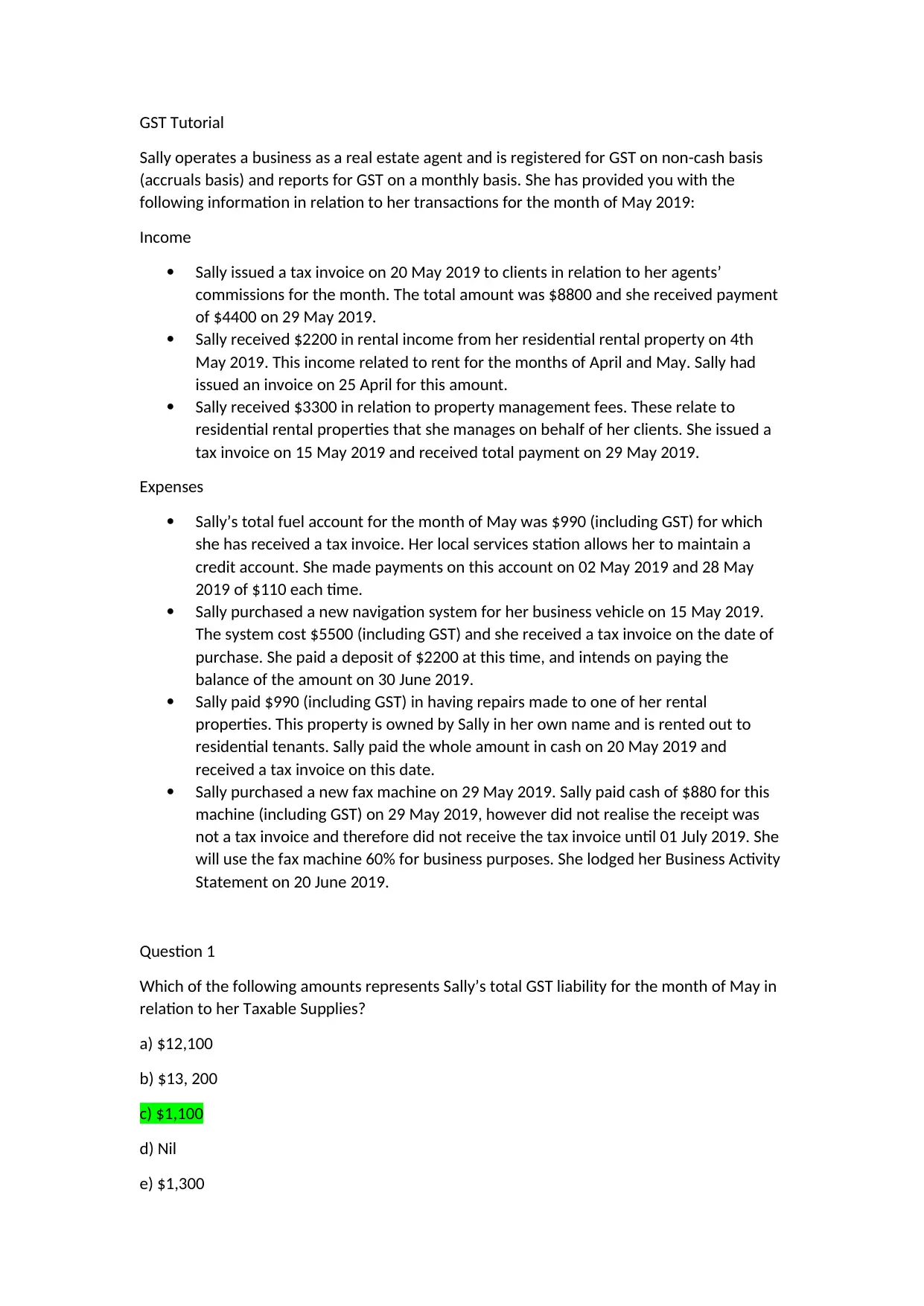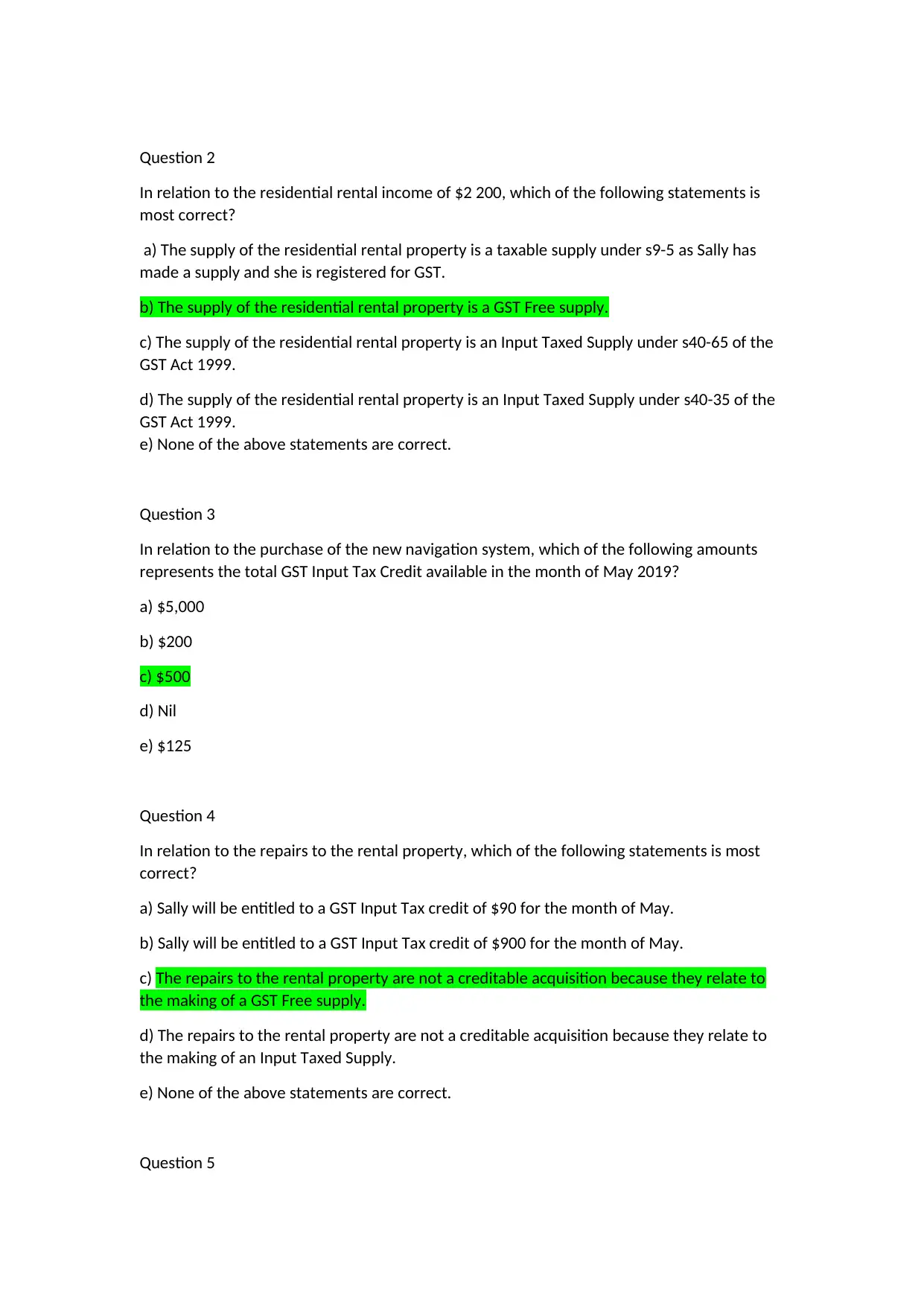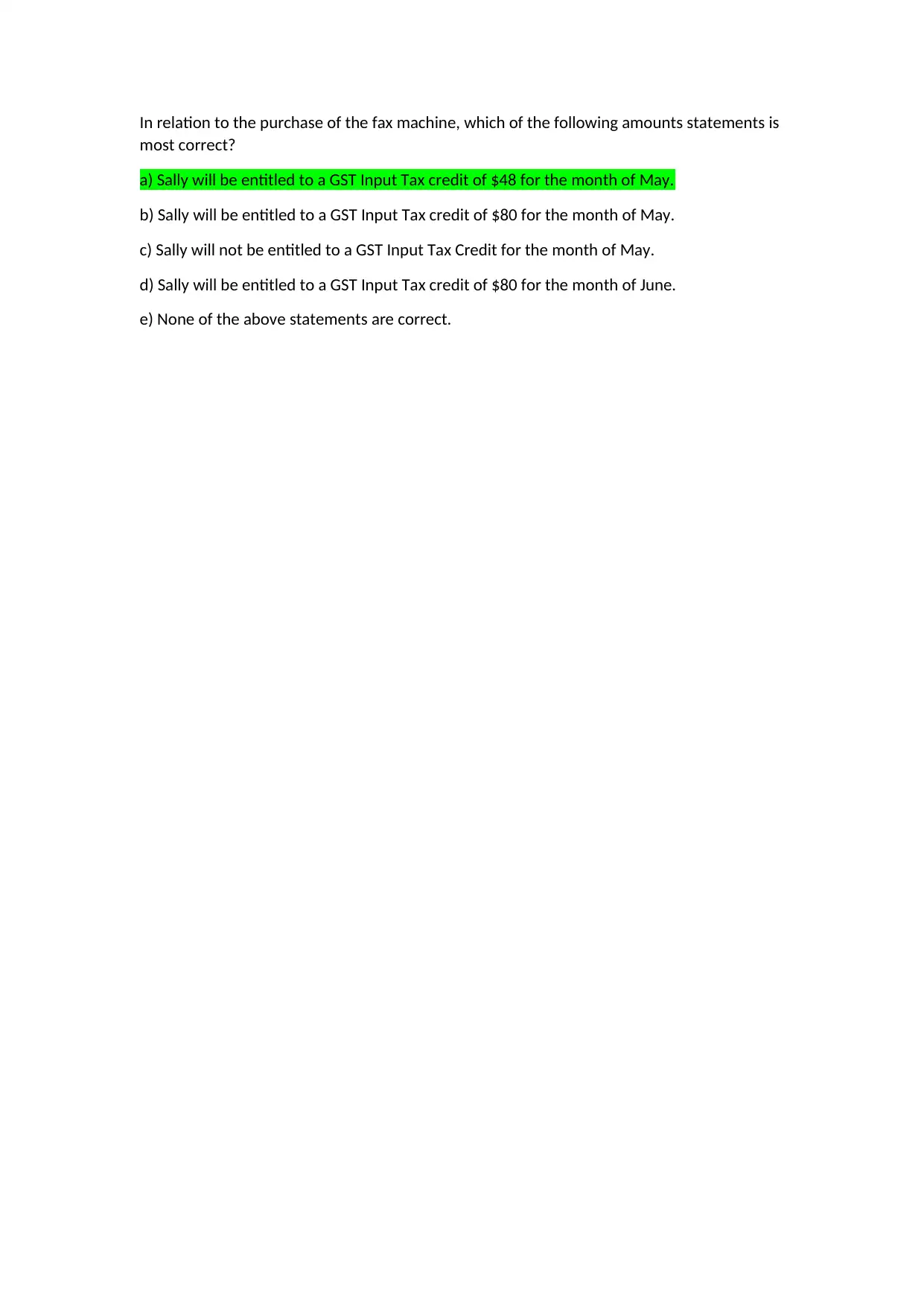GST Tutorial: Comprehensive Analysis of Sally's GST for May 2019
VerifiedAdded on 2022/11/15
|3
|887
|92
Homework Assignment
AI Summary
This homework assignment is a GST (Goods and Services Tax) tutorial centered around the business transactions of Sally, a real estate agent registered for GST on a non-cash (accruals) basis. The assignment presents Sally's income and expenses for May 2019, including commissions, rental income, property management fees, fuel, a new navigation system, repairs to a rental property, and a fax machine. Students are tasked with answering five multiple-choice questions that assess their understanding of GST principles, including taxable supplies, GST-free supplies, input taxed supplies, and input tax credits. The questions require students to calculate Sally's GST liability, determine the correct GST treatment for specific transactions like residential rental income, and calculate the GST input tax credit available for various purchases, considering factors like payment timing and business use percentage. The assignment tests the student's ability to apply GST rules to practical scenarios and calculate GST amounts accurately.
1 out of 3










![[object Object]](/_next/static/media/star-bottom.7253800d.svg)